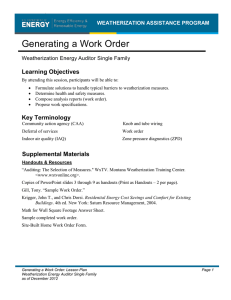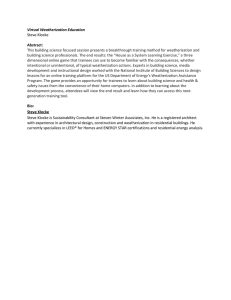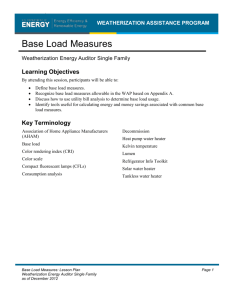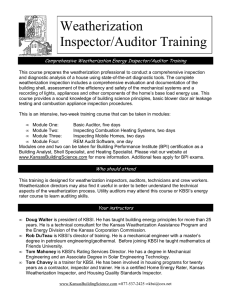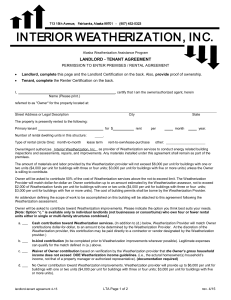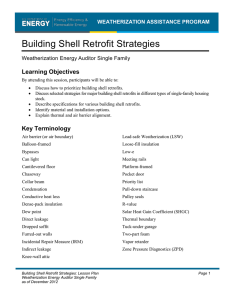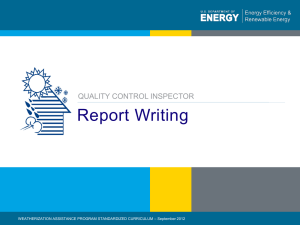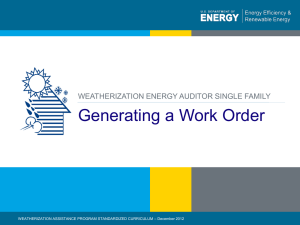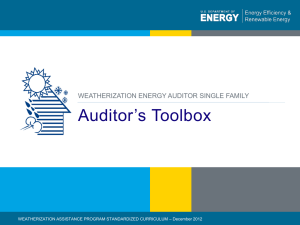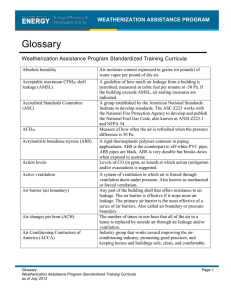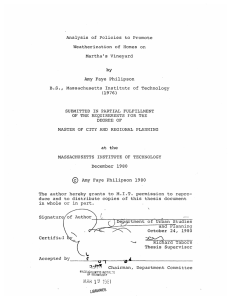Intermediate Math - Weatherization Assistance Program Technical
advertisement
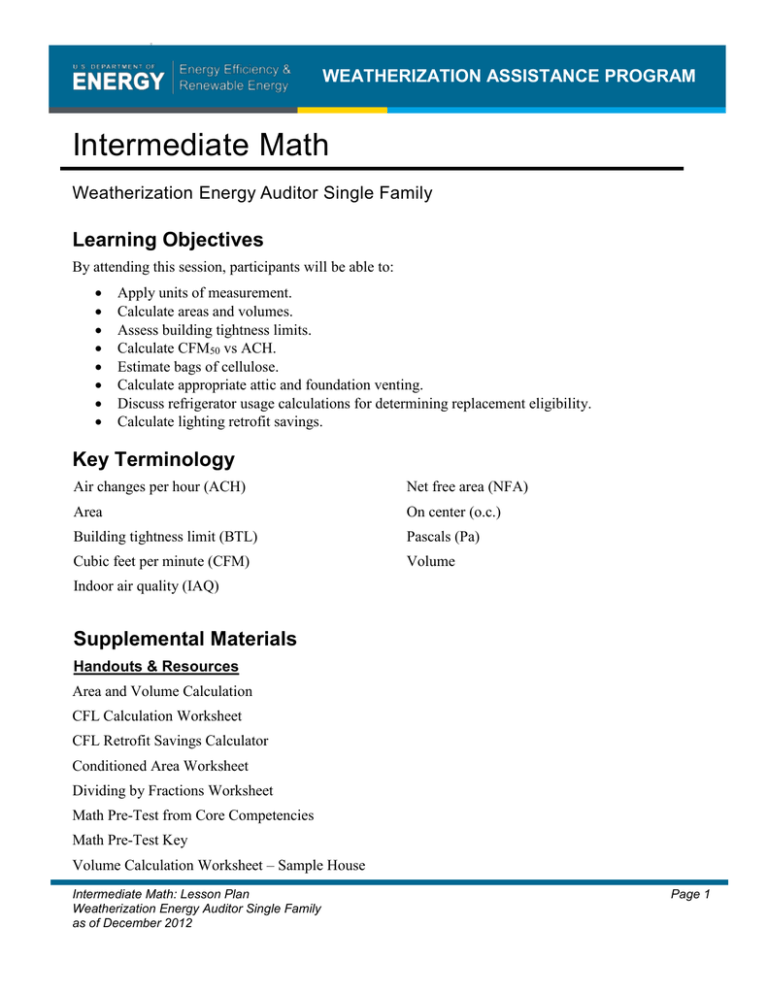
WEATHERIZATION ASSISTANCE PROGRAM Intermediate Math Weatherization Energy Auditor Single Family Learning Objectives By attending this session, participants will be able to: Apply units of measurement. Calculate areas and volumes. Assess building tightness limits. Calculate CFM50 vs ACH. Estimate bags of cellulose. Calculate appropriate attic and foundation venting. Discuss refrigerator usage calculations for determining replacement eligibility. Calculate lighting retrofit savings. Key Terminology Air changes per hour (ACH) Net free area (NFA) Area On center (o.c.) Building tightness limit (BTL) Pascals (Pa) Cubic feet per minute (CFM) Volume Indoor air quality (IAQ) Supplemental Materials Handouts & Resources Area and Volume Calculation CFL Calculation Worksheet CFL Retrofit Savings Calculator Conditioned Area Worksheet Dividing by Fractions Worksheet Math Pre-Test from Core Competencies Math Pre-Test Key Volume Calculation Worksheet – Sample House Intermediate Math: Lesson Plan Weatherization Energy Auditor Single Family as of December 2012 Page 1 WEATHERIZATION ASSISTANCE PROGRAM Online Platform Lessons Use these online interactive training modules as prerequisites before students attend the course, or as in-class computer lab sessions. Users must first create an account at www.nterlearning.org to access the lesson. a- 2.7 Building Measurements https://www.nterlearning.org/web/guest/course-details?cid=248 Classroom Props & Activities Practice converting feet and inches: Converting measurements back and forth can be tricky. Ask participants how tall they are. Choose one, and have students calculate what the chosen participant’s volume would be if she/he were a rectangular prism measuring 1 in. x 1 ft. 6 in. x her/his height. What about a cylinder with a 1 ft. radius? Prism formula = L x W x H = 1 in. x 18 in. x trainee’s height in inches (convert by multiplying feet by 12 and adding inches). For example, a 6 ft. tall person has a volume of 0.75 cubic feet as a 1 in. x 18 in. x 72 in. prism. Cylinder formula = r2 x height = (3.14)12 in.2 x trainee’s height in inches = 452.16 sq. in. x height. For example, a 6 ft. tall person has a volume of 452.16 sq. in. x 72 in. = 32,556 cu. in. or 18.84 cu. ft. as a cylinder with a 1 ft. radius. Divide cubic inches results by 1,728 to translate into cubic feet. Class Overview With the presentation, explain that standard weatherization math requires only the four basics—addition, subtraction, multiplication, and division—and that keeping track of units is critical. Use the included worksheets to determine students’ strengths and weaknesses. If all participants are comfortable with fractions, you do not need to spend much class time covering the topic. If everyone is rusty at calculating volumes, take a little extra time on that portion, providing a few more examples for students to work out. Pause the presentation when it comes to equations. Let the students solve equations on their own before clicking ahead to reveal answers. Have students calculate the volume of the classroom and the areas of the classroom floor and walls. Make up a hypothetical blower door reading (or mention a real one, if done as a class exercise) and have students calculate ACH. Plug a meter into the refrigerator before class begins. After two hours (or whenever you reach the refrigerator section of the presentation) read the meter and have students calculate annual usage of the unit. Does it qualify for replacement? Use the CFL calculation worksheet, and make it personal. Ask students if they have CFLs in their homes. If someone does not have CFLs (and doesn’t mind being used for this exercise), ask approximately how many light fixtures are in the house. Assume four hours of use per day per bulb, and have students calculate how much electricity the chosen student could save by switching all the bulbs to CFLs. Use local energy prices to calculate annual dollar savings. Page 2 Intermediate Math: Lesson Plan Weatherization Energy Auditor Single Family as of December 2012
